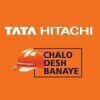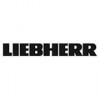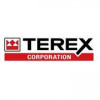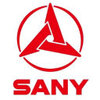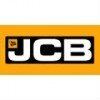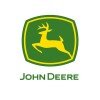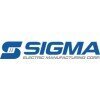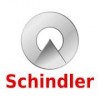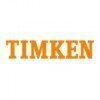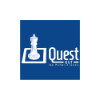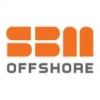4 Caterpillar Inc Engineer Jobs
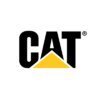
Engineer
Caterpillar Inc
posted 3d ago
Job Role Insights
Flexible timing
Key skills for the job
Job Description
Career Area:
Engineering Job Description:
Your Work Shapes the World at Caterpillar Inc.
Role Definition
Designs, develops, builds and evaluates engine systems with existing and new technologies.
Responsibilities
- Executing the design strategy as defined by the L3 System Lead (e.g. modular design / part minimisation / re-manufacturability / etc) for Engine structures- crankcase, head, housings, sump and support structure
- Generate concepts/design sets to meet Technical Objectives , refine concept and down select to 1 or 2 design sets/concepts to take through to detailed design
- Verify/ validate residual risk in the design through virtual risk verification techniques such as component and sub-system simulation (Post-freeze)
- Perform modal and structural analysis where required
- Should be extremely efficient in Creo 3D modelling techniques including castings, forgings, fabrications and piping.
- Should have very good understanding of GD&T, tolerance stack up and drafting .
- Should have capability to work on Creo Mechanisms for multiple engine systems.
- Identify and Assess product risk through Sub-system and component DFMEAs. Create DFMEAs from scratch and take to full completion by discussing with cross functional teams.
- Use of virtual risk mitigation techniques (e.g. Stack-tolerance analysis, Hand calculations, component & sub-system simulation) (Pre-freeze)
- Use of SME review, best practice guides to mitigate risk in potential designs (Pre-freeze)
- Use the output from the risk mitigation to create a robust, detailed design including: Models & Prints, Configured Groups & Assembly Drawings
- Completing technical sign-off of the completed design
- Supplier collaboration
- APQP planning, monitoring and reporting
- Performing data extraction/analysis, failure analysis and problem solving, application of simulation tools and methods, and practical application of theory and concepts.
- Requires a degree in an accredited Engineering.
Skill Descriptors
- Analytical Thinking: Knowledge of techniques and tools that promote effective analysis; ability to determine the root cause of organizational problems and create alternative solutions that resolve these problems.
- Approaches a situation or problem by defining the problem or issue and determining its significance.
- Makes a systematic comparison of two or more alternative solutions
Level Working Knowledge:
Applies an assigned technique for critical thinking in a decision-making process.
- Identifies, obtains, and organizes relevant data and ideas.
- Participates in documenting data, ideas, players, stakeholders, and processes.
- Recognizes, clarifies, and prioritizes concerns.
- Assists in assessing risks, benefits and consideration of alternatives.
Effective Communications:
Understanding of effective communication concepts, tools and techniques; ability to effectively transmit, receive, and accurately interpret ideas, information, and needs through the application of appropriate communication behaviours.
Level Extensive Experience:
Reviews others writing or presentations and provides feedback and coaching.
Adapts documents and presentations for the intended audience.
Communicates well downward, upward, and outward.
Employs appropriate methods of persuasion when soliciting agreement.
Maintains focus on the topic at hand.
Technical Excellence :
Level Extensive Experience:
Reviews others writing or presentations and provides feedback and coaching.
Adapts documents and presentations for the intended audience.
Communicates well downward, upward, and outward.
Employs appropriate methods of persuasion when soliciting agreement.
Maintains focus on the topic at hand.
Technical Excellence :
Knowledge of a given technology in engine structure and systems including crankcase, head, housings, sump, support and brackets and various application methods; ability to develop and provide solutions to significant technical challenges.
Knowledge of a given technology in high horsepower engine systems will be additional benefits
Knowledge of a given technology in engine systems including 1D simulation, TVA, structural and flow analysis
Level Working Knowledge:
Provides effective technical solutions to routine functional challenges via sound technical competence, effectively examining implications of events and issues.
Effectively performs the technical job aspects, continuously building knowledge and keeping up-to-date on technical and procedural job components.
Applies technical operating and project standards based on achieving excellence in delivered products, technologies and services.
Applies current procedures and technologies to help resolve technical issues in ones general area of technical competence.
Helps others solve technical or procedural problems or issues.
Project Management:
Knowledge of effective project management strategies and tactics; ability to plan, organize, monitor, and control projects, ensuring efficient utilization of technical and administrative resources to achieve project objectives.
Level Working Knowledge:
Provides input for Gantt or PERT charts or their equivalent to track project progress and status.
Under guidance, plans and estimates simple projects.
Assists in detailed project plans including cost, schedule, and resource requirements.
Obtains information from stakeholders during the planning stage of a project.
Produces standard project status reports.
Level Working Knowledge:
Provides input for Gantt or PERT charts or their equivalent to track project progress and status.
Under guidance, plans and estimates simple projects.
Assists in detailed project plans including cost, schedule, and resource requirements.
Obtains information from stakeholders during the planning stage of a project.
Produces standard project status reports.
Manufacturing Standards, Procedures and Policies:
Knowledge of organizational standards, procedures and policies in manufacturing activities; ability to plan, guide, and monitor manufacturing processes for compliance.
Level Basic Understanding:
Discusses the relevance of standards for a manufacturing environment.
Researches process and product blueprints for own area.
Describes and follows all policies, standards and procedures.
Obtains documentation and information on standards and their usage.
Level Basic Understanding:
Discusses the relevance of standards for a manufacturing environment.
Researches process and product blueprints for own area.
Describes and follows all policies, standards and procedures.
Obtains documentation and information on standards and their usage.
Employment Type: Full Time, Permanent
Read full job descriptionPrepare for Engineer roles with real interview advice
People are getting interviews at Caterpillar Inc through
People are getting interviews through
(based on 115 Caterpillar Inc interviews)
Campus Placement
Job Portal
Company Website
Referral
Walkin
Recruitment Consultant
42%
20%
14%
7%
4%
3%
10% candidates got the interview through other sources.
High
Confidence
?
High Confidence means the data is based on a large number of responses received from the candidates.
What Engineer at Caterpillar Inc are saying
Rating based on 18 Engineer
reviews
Likes
Salary Work culture
Dislikes
Career development
Read 18 reviewsEngineer salary at Caterpillar Inc
reported by
188
employees
with 2-15
years exp.

₹7
L/yr - ₹26.5
L/yr
194%
more
than the average Engineer Salary in India
View more details
What Caterpillar Inc employees are saying about work life
based on 1.2k employees
Flexible timing
Monday to Friday
No travel
Day Shift
Similar Jobs for you
Caterpillar Inc Aurangabad Office Location
Aurangabad Office
IXIA Center, T- 6/1,
MIDC Chikalthana,
Aurangabad, India
Aurangabad
Share an Interview

 Anonymous · Research & Development - Other
in Chennai
Anonymous · Research & Development - Other
in Chennai









